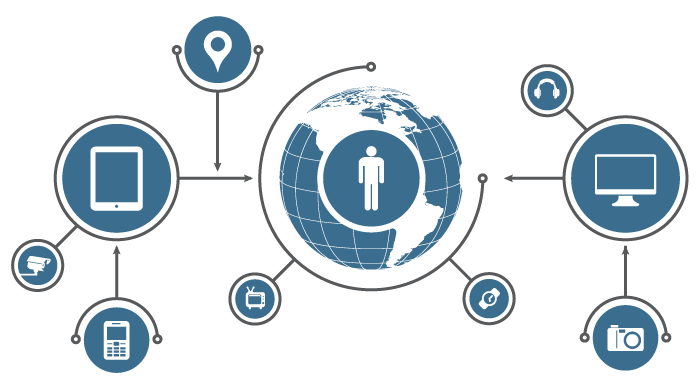The future explosion in the number of intelligent devices will create a network rich with information that allows supply chains to assemble and communicate in new ways, according to Gartner.
The analyst firm forecasts that a 30-fold increase in internet-connected physical devices by 2020 will significantly alter supply chain leader information access and cyber-risk exposure.
The Internet of Things (IoT) is forecast to reach 26 billion installed units by 2020, up from 900 million just five years ago, and will impact the information available to supply chain leaders and how the supply chain operates, depending on industry.
"It's important to put IoT maturity into perspective because of the fast pace at which it is emerging, so supply chain strategists need to be looking at its potential now," said Michael Burkett, managing VP at Gartner.
“Some IoT devices are more mature, such as commercial telematics now used in trucking fleets to improve logistics efficiency. Some, such as smart fabrics that use sensors within clothing and industrial fabrics to monitor human health or manufacturing processes, are just emerging.”
As these capabilities become mainstream they will allow modern supply chains to deliver more differentiated service to customers more efficiently. This will happen when many more physical assets than today are communicating their state to a networked ecosystem that then formulates an intelligent response.
Gartner said that a double-digit increase in digital marketing investment will provide supply chain leaders with deeper market insight, as well as fulfilment challenges in industries where more granular market segments are targeted.
Digital marketing budgets are expected to continue to increase in 2014. A rapid move to digital marketing has direct implications for the supply chain, particularly for consumer product industries with rapid cycles of go-to-market and promotional activity. B2B industries adopting digital channels to reach customers will also be affected.
Marketers are segmenting audiences, understanding what they want and then building customer experiences around their commerce sites. There will be increased fragmentation of demand as digital marketing targets finer market segments in search of differentiating value propositions to end users, customers and consumers.
Using digital channels for product launches, seasonal promotions and other initiatives, marketers are conducting campaigns and communications across multiple channels, and adjusting promotions depending on results.
>See also: Augmented reality will become an important workplace tool: Gartner
"Supply chain leaders must design their processes to operate in this digital business world," said Burkett. "This includes fulfilling the new expectations of customers and the volatile demands that digital marketing will create.
“A future supply chain will meet those expectations by converging people, business and things in a digital value network, and incorporating fast-emerging capabilities such as IoT and smart machines into this design strategy."
The supply chain team can use digital marketing customer information to refine its own segmentation efforts and to enhance demand planning. In this way, the team becomes market-driven itself, by understanding channel programmes and using this as an early indicator of demand.
Digital business will also disrupt the design and manufacturing of products during the next five years. First will be the use of digital product models for use in 3D printing (3DP) and for simulating hybrid digital-physical software-embedded products.
The promise of 3DP is to achieve supply chain bliss by postponing a product's manufacture to the latest point in the supply chain. If 3DP delivers on this promise, it would disrupt entire supply chains by responding only to actual demand, thus eliminating excess inventory and plant capacity.
Shipments of 3D printers are growing rapidly as these technologies emerge to find their right fit in manufacturing and the extended supply chain.
However, supply chain strategists should recognise that 3DP is still in its very early stages and is currently applicable to only select materials and manufacturing process technologies.
>See also: Gartner predicts device shipments to hit $2.5BN in 2014
The second disruption will be the process of designing embedded software into physical products so they participate in an intelligent network to add value to a digital business.
"As the number of software-embedded digital-physical products grows, the methods of product development and life cycle management across the supply chain will change," said Burkett. "Supply chain teams will have to take ownership for coordinating the delivery of quality-perfect orders of these digital-physical products.
“This extends beyond developing and ensuring quality of a single device to managing the larger complexity of these connected systems."







